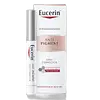What's inside
What's inside
 Key Ingredients
Key Ingredients

 Benefits
Benefits

 Concerns
Concerns

 Ingredients Side-by-side
Ingredients Side-by-side

Water
Skin ConditioningEthylhexyl Palmitate
EmollientIsocetyl Stearate
EmollientDicaprylyl Ether
EmollientGlycerin
HumectantMaltodextrin
AbsorbentAscorbyl Tetraisopalmitate
AntioxidantButylene Glycol
HumectantDimethicone
EmollientGlycolic Acid
BufferingSteareth-2
EmulsifyingSteareth-21
CleansingLactic Acid
BufferingSodium Hydroxide
BufferingSucrose Dilaurate
EmollientAmmonium Acryloyldimethyltaurate/Vp Copolymer
Vp/Va Copolymer
Glycyrrhetinic Acid
Skin ConditioningJojoba Esters
EmollientAcrylates/C10-30 Alkyl Acrylate Crosspolymer
Emulsion StabilisingGlyceryl Behenate
EmollientGlyceryl Stearate
EmollientPEG-100
HumectantPEG-100 Stearate
Helianthus Annuus Seed Wax
Skin ConditioningSodium Cocoyl Glutamate
CleansingXanthan Gum
EmulsifyingDimethiconol
EmollientPisum Sativum Extract
Skin ConditioningO-Cymen-5-Ol
AntimicrobialSalicylic Acid
MaskingTocopheryl Acetate
AntioxidantAcacia Decurrens Flower Wax
EmollientPolyglycerin-3
HumectantTocopherol
AntioxidantWater, Ethylhexyl Palmitate, Isocetyl Stearate, Dicaprylyl Ether, Glycerin, Maltodextrin, Ascorbyl Tetraisopalmitate, Butylene Glycol, Dimethicone, Glycolic Acid, Steareth-2, Steareth-21, Lactic Acid, Sodium Hydroxide, Sucrose Dilaurate, Ammonium Acryloyldimethyltaurate/Vp Copolymer, Vp/Va Copolymer, Glycyrrhetinic Acid, Jojoba Esters, Acrylates/C10-30 Alkyl Acrylate Crosspolymer, Glyceryl Behenate, Glyceryl Stearate, PEG-100, PEG-100 Stearate, Helianthus Annuus Seed Wax, Sodium Cocoyl Glutamate, Xanthan Gum, Dimethiconol, Pisum Sativum Extract, O-Cymen-5-Ol, Salicylic Acid, Tocopheryl Acetate, Acacia Decurrens Flower Wax, Polyglycerin-3, Tocopherol
 Reviews
Reviews

Ingredients Explained
These ingredients are found in both products.
Ingredients higher up in an ingredient list are typically present in a larger amount.
Ammonium Acryloyldimethyltaurate/Vp Copolymer (let's call it AAVC for short) is a synthetically created polymer. It's used as a film-forming agent and used to thicken the consistency of products.
AAVC is able to increase the consistency and viscosity of products due to its large molecule size. It also prevents ingredients from separating.
Glycerin is already naturally found in your skin. It helps moisturize and protect your skin.
A study from 2016 found glycerin to be more effective as a humectant than AHAs and hyaluronic acid.
As a humectant, it helps the skin stay hydrated by pulling moisture to your skin. The low molecular weight of glycerin allows it to pull moisture into the deeper layers of your skin.
Hydrated skin improves your skin barrier; Your skin barrier helps protect against irritants and bacteria.
Glycerin has also been found to have antimicrobial and antiviral properties. Due to these properties, glycerin is often used in wound and burn treatments.
In cosmetics, glycerin is usually derived from plants such as soybean or palm. However, it can also be sourced from animals, such as tallow or animal fat.
This ingredient is organic, colorless, odorless, and non-toxic.
Glycerin is the name for this ingredient in American English. British English uses Glycerol/Glycerine.
Learn more about GlycerinWater. It's the most common cosmetic ingredient of all. You'll usually see it at the top of ingredient lists, meaning that it makes up the largest part of the product.
So why is it so popular? Water most often acts as a solvent - this means that it helps dissolve other ingredients into the formulation.
You'll also recognize water as that liquid we all need to stay alive. If you see this, drink a glass of water. Stay hydrated!
Learn more about Water